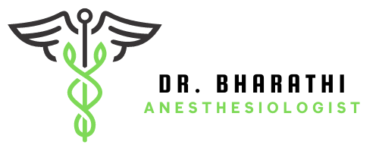What is nipha virus
I believe you may be referring to the Nipah virus, which is a zoonotic virus that can be transmitted from animals to humans. It was first identified in Malaysia in 1998 during an outbreak among pig farmers and has since caused sporadic outbreaks in several countries, primarily in South and Southeast Asia. Nipah virus infection can lead to severe respiratory and neurological symptoms, and it has a high mortality rate. It is considered a potential public health threat, and research continues to better understand and combat the virus. Please note that my knowledge is based on information available up to September 2021, and there may have been developments or changes since then.
How many states in India effected till date…?
As of my last knowledge update in September 2021, several states in India had reported cases of Nipah virus infection over the years, including Kerala, West Bengal, and a few others. However, the extent of the impact can vary from one outbreak to another, and the number of states affected may change over time. For the most current information on Nipah virus outbreaks in India, I recommend checking with the Indian government’s health authorities or reliable news sources for updates since my information might be outdated.
Symptoms
The symptoms of Nipah virus infection can vary in severity but often include:
- Fever: The infection typically starts with a high fever.
- Headache: Many patients experience severe headaches.
- Muscle Pain: Muscle pain or myalgia is common.
- Respiratory Symptoms: This may include a cough and difficulty breathing.
- Vomiting: Nausea and vomiting are common symptoms.
- Neurological Symptoms: As the infection progresses, it can lead to encephalitis (inflammation of the brain), which can cause confusion, dizziness, and even coma.
- Seizures: Some patients may experience seizures.
- Symptoms of Acute Respiratory Distress Syndrome (ARDS): In severe cases, Nipah virus infection can lead to ARDS, which can cause severe breathing difficulties.
It’s important to note that Nipah virus infection can be quite severe, and the mortality rate is relatively high. If you suspect someone may have been exposed to Nipah virus and is exhibiting these symptoms, it’s crucial to seek medical attention promptly. Additionally, because it can spread from animals to humans, avoiding contact with infected animals and their bodily fluids is essential for prevention. Please consult a healthcare professional or refer to current guidelines from health authorities for the most up-to-date information on Nipah virus symptoms and precautions.
Preventive measures
Preventive measures for Nipah virus infection primarily focus on reducing the risk of exposure to the virus. Here are some important steps to take:
- Avoid Close Contact with Infected Animals: Nipah virus can spread from animals to humans. Avoid contact with sick pigs, bats, or other animals that could be carriers of the virus.
- Practice Good Hygiene: Frequent handwashing with soap and water is essential, especially after handling animals or their products.
- Avoid Consuming Raw Date Palm Sap: In some outbreaks, Nipah virus has been linked to the consumption of raw date palm sap that has been contaminated by bat saliva or urine. Boiling the sap before consumption can reduce this risk.
- Wear Protective Clothing: If you are caring for someone infected with Nipah virus, or handling potentially contaminated materials, use personal protective equipment, including gloves and masks.
- Isolate Infected Individuals: Patients with Nipah virus should be isolated from healthy individuals to prevent further transmission.
- Practice Respiratory Hygiene: If you are in close contact with someone who has Nipah virus, practice good respiratory hygiene, such as covering your mouth and nose when coughing or sneezing.
- Hospital Infection Control Measures: Healthcare facilities should implement strict infection control measures to prevent nosocomial (hospital-acquired) transmission.
- Public Health Surveillance: Public health authorities should conduct surveillance to detect and respond to outbreaks promptly.
It’s important to note that there is no specific antiviral treatment for Nipah virus infection, so prevention is crucial. These measures can help reduce the risk of contracting the virus during an outbreak. If you are in an area where Nipah virus outbreaks have occurred, stay informed about the latest guidance from local health authorities and follow their recommendations.
Treatment
As of my last knowledge update in September 2021, there was no specific antiviral treatment or vaccine available for Nipah virus infection. Therefore, treatment mainly focused on supportive care to manage symptoms and complications. Here are some of the general supportive measures:
- Isolation: Infected individuals should be isolated to prevent the spread of the virus to others.
- Symptomatic Treatment: Medical care is provided to manage the symptoms. This may include fever reducers, pain relievers, and medications to reduce vomiting and nausea.
- Intravenous (IV) Fluids: Patients with severe symptoms, especially those with dehydration, may require intravenous fluids to maintain hydration.
- Ventilatory Support: In severe cases, where respiratory distress occurs, mechanical ventilatory support may be necessary.
- Antibiotics: While antibiotics do not treat the Nipah virus itself, they may be administered to prevent or treat secondary bacterial infections.
- Seizure Management: If seizures occur, anticonvulsant medications may be administered.
It’s important to note that the treatment and management of Nipah virus infection may have evolved since my last update in 2021. Research and clinical trials may have led to advancements in treatment options or the development of potential antiviral drugs or vaccines. If you suspect someone has been exposed to Nipah virus or is exhibiting symptoms, it’s crucial to seek immediate medical attention, and healthcare professionals will provide the most current and appropriate care based on the latest guidelines and available treatments.
Age gender or status difference
Nipah virus can affect individuals of any age, gender, or status. However, certain factors may influence the severity of the infection and the risk of exposure:
- Age: Nipah virus infection can affect individuals of all ages, but severe cases and a higher risk of complications are often observed in very young children and older adults. Their immune systems may not respond as effectively to the virus.
- Gender: Gender does not appear to be a significant factor in determining the risk of Nipah virus infection. Both males and females can become infected.
- Health Status: Individuals with underlying health conditions or compromised immune systems may be at a greater risk of severe illness if they contract the virus. Having a strong and healthy immune system can help the body’s response to the infection.
- Occupation: In some outbreaks, specific occupational groups, such as pig farmers and those who work closely with animals, have been at higher risk due to potential exposure to infected animals.
- Location: The risk of Nipah virus infection can vary by geographic location. Outbreaks have been more common in certain regions, particularly in parts of South and Southeast Asia.
It’s important to note that Nipah virus is transmitted primarily from animals to humans (zoonotic), and the risk of exposure can be reduced through preventive measures, such as avoiding contact with infected animals and practicing good hygiene.
The impact of Nipah virus infection can vary from person to person, and the severity of symptoms may depend on factors like the individual’s overall health and immune response. Timely medical care is crucial for anyone who suspects they may have been exposed to the virus or is experiencing symptoms.
Pinpoint precautions
Certainly, here are some specific precautions to help reduce the risk of Nipah virus infection:
- Avoid Close Contact with Animals: Do not touch, handle, or consume animals that may be infected with Nipah virus, especially pigs and bats. Avoid contact with their bodily fluids, such as urine, saliva, and feces.
- Avoid Consuming Raw Date Palm Sap: In areas where Nipah virus outbreaks have occurred, avoid drinking raw date palm sap, as it can be contaminated with the virus from bat saliva or urine. Boiling the sap before consumption can reduce the risk.
- Practice Good Hand Hygiene: Wash your hands frequently with soap and water, especially after handling animals, animal products, or visiting places where bats are known to roost.
- Use Personal Protective Equipment: If you need to handle potentially infected animals or materials, use appropriate personal protective equipment, such as gloves, masks, and goggles, to reduce the risk of exposure.
- Isolate Infected Individuals: If someone is infected with Nipah virus, they should be isolated to prevent transmission to others. Healthcare workers should use strict infection control measures.
- Avoid Travel to Outbreak Areas: If there is an ongoing Nipah virus outbreak in a particular region, consider avoiding non-essential travel to that area.
- Seek Immediate Medical Care: If you or someone you know develops symptoms such as fever, headache, muscle pain, vomiting, or respiratory distress, seek prompt medical attention and inform healthcare providers of any potential exposure to Nipah virus.
- Stay Informed: Keep yourself updated on the latest information and guidance provided by local health authorities regarding Nipah virus outbreaks and preventive measures.
Remember that Nipah virus is relatively rare, but it can have serious consequences. Taking these precautions can help reduce the risk of infection, especially in areas where outbreaks have occurred or in regions where Nipah virus is known to be present in wildlife populations.















